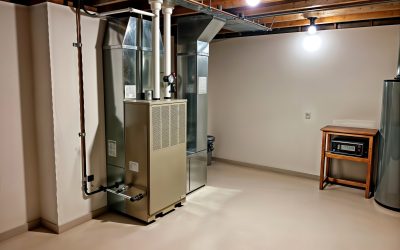Understanding the volts and amps used by your air conditioner is crucial for both safety and efficiency. Knowing these electrical requirements ensures that your AC unit is compatible with your home’s wiring, preventing potential overloads and electrical issues. Moreover, awareness of your AC’s power consumption helps in making informed decisions about energy usage, ultimately leading to cost savings and improved energy efficiency. This knowledge can also guide you in selecting the right air conditioner model that meets your cooling needs without exceeding your electrical capacity.
The wattage of an appliance is determined by its voltage and amperage. You can use the yellow EnergyGuide label on your air conditioning to determine the volts and amps it uses.

Using the above label, here’s how you can calculate volts and amps:
- Calculate the estimated yearly electricity usage by dividing the estimated yearly energy cost ($143) by the national average electricity cost per kWh (12.4 cents): $143 / $0.124/kWh = 1,153 kWh.
- Translate energy consumption to watt-hours (Wh) by multiplying the label’s kWh by 1,000. This gives you 1,153,000 Wh.
- Divide 1,153,000 Wh by the number of days in a year (365), which gives you 3,159 Wh per day.
- Divide 3,159 Wh per day by the number of hours a day (24) to get an average hourly wattage of 132 W.
- Air conditioners usually use 120-volt outlets. Divide the 132 W by 120 volts to get the amperage for your appliance: 132 W / 120 V = 1.1 amps.
Calculations for Different Types of Air Conditioners
Window Units:
Example Calculation:
Voltage: Typically 110-120V
Amperage: Usually between 5-15 amps
To calculate the power consumption: Watts=Volts×Amps\text{Watts} = \text{Volts} \times \text{Amps}Watts=Volts×Amps For a 120V window unit using 10 amps: 120V×10A=1200W120V \times 10A = 1200W120V×10A=1200W
Central AC Units:
Example Calculation:
Voltage: Usually 220-240V
Amperage: Typically between 15-60 amps
For a 240V central AC using 30 amps: 240V×30A=7200W240V \times 30A = 7200W240V×30A=7200W
Portable AC Units:
Example Calculation:
Voltage: Typically 110-120V
Amperage: Around 8-12 amps
For a 120V portable unit using 10 amps: 120V×10A=1200W120V \times 10A = 1200W120V×10A=1200W
Mini-Split Units:
Example Calculation:
Voltage: Typically 110-240V depending on the model
Amperage: Generally between 5-20 amps
For a 240V mini-split using 15 amps: 240V×15A=3600W240V \times 15A = 3600W240V×15A=3600W
PTAC Units:
Example Calculation:
Voltage: Usually 208/230V
Amperage: Typically around 10-20 amps
For a 230V PTAC unit using 12 amps: 230V×12A=2760W230V \times 12A = 2760W230V×12A=2760W
Tips to Reduce Energy Consumption of Air Conditioners
1. Regular Maintenance
- Clean or Replace Filters: Dirty filters restrict airflow, making the AC work harder and consume more energy. Check and clean or replace filters every 1-2 months.
- Inspect Coils: Clean the evaporator and condenser coils annually to maintain efficiency.
- Check Refrigerant Levels: Low refrigerant levels reduce efficiency and increase energy consumption. Have a professional check and refill if necessary.
2. Programmable Thermostats
- Set Optimal Temperatures: Use a programmable thermostat to set the temperature higher when you’re not home and lower when you are.
- Create a Schedule: Program the thermostat to adjust the temperature automatically based on your routine. For example, raise the temperature during the day when no one is home and cool it down before you return.
3. Additional Tips
- Seal Leaks: Ensure windows and doors are sealed properly to prevent cool air from escaping.
- Use Ceiling Fans: Fans help distribute cool air more evenly, reducing the load on your AC.
- Shade Your Unit: Keep your outdoor unit shaded to improve efficiency.
Watts, amps, voltage, and more: what do they mean?
There are a lot of terms you can use to describe how electricity flows and is used by appliances. We’ve already mentioned most of them – here are a few definitions to keep things straight:
-
- Volts (V): volts (short for voltage) measure electrical pressure differences. Voltage is the speed of electricity passing through a circuit.
- Amps (A): amps (short for amperes) measure electrical current. Amps are the amount of electrons (which make up electricity) flowing through a circuit.
- Watts (W) and kilowatts (kW): multiplying volts x amps get you watts (or wattage). Watts are the rate of electricity consumption. A kilowatt is just 1,000 watts.
- Kilowatt-hours (kWh) are how your electric bill measures your energy usage. Simply put, kilowatt-hours are electricity consumption over time.
You can think of all these terms as water flowing through a pipe. Voltage is the water pressure, amps are the amount of water flowing past any point, and wattage is the overall rate of water flow through the pipe.
How much does it cost to power an air conditioner?
When you get your monthly electric bill, you only see the total amount you are charged, not how much each appliance contributes to your final bill. Based on an average running wattage of 2,275 W for central air conditioners (amounting to 8,304 kWh/year) and 950 W for window air conditioners (amounting to 2,256 kWh/year), and using state average electricity rates.
Note: average electricity rates are based on October 2021 data from the U.S. Energy Information Administration (EIA).
Calculate how much energy your air conditioner uses
Remember that yellow Energy Saver sticker we mentioned above? Suppose you want to know how much electricity your air conditioner uses (or is supposed to use). Take the estimated yearly electricity use in kWh. In that case, this is probably your best bet for an accurate number. Multiply this number by the average electricity rate in your area to estimate how much you spend to power your air conditioner each year. For an estimated monthly cost, divide the estimated yearly cost by 12.
Heat pumps are an efficient alternative to traditional AC
Air source heat pumps are an efficient electric heating and cooling option for your home or business and are a great alternative to traditional central or window AC. You may have heard of “mini-splits” or “ductless AC” before – that’s just another way to talk about heat pumps. Heat pumps are usually far more efficient (and therefore less expensive) in cold climates than air conditioning.
Our expert technicians at Clarksville Comfort are ready to help. Contact us today to schedule a professional assessment and ensure your air conditioner is ready to keep you cool efficiently throughout the year.
FAQ
What is the difference between volts, amps, and watts?
Volts (V) measure the electrical potential or pressure. Amps (A) measure the flow of electricity. Watts (W) measure the power consumed. Watts can be calculated by multiplying volts by amps.







